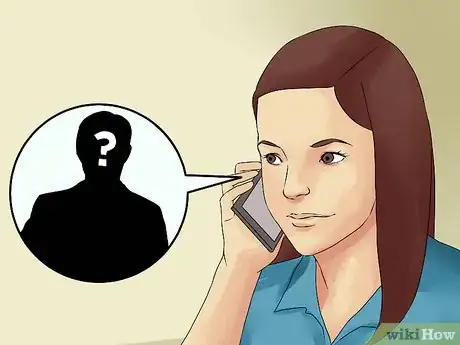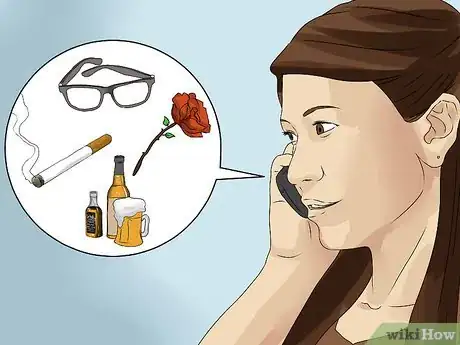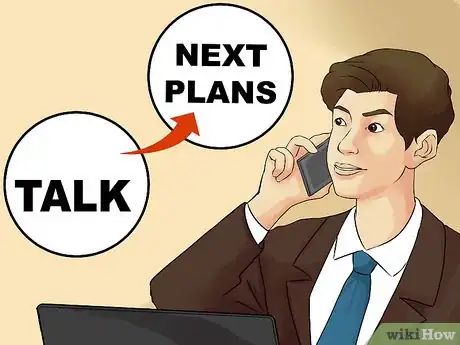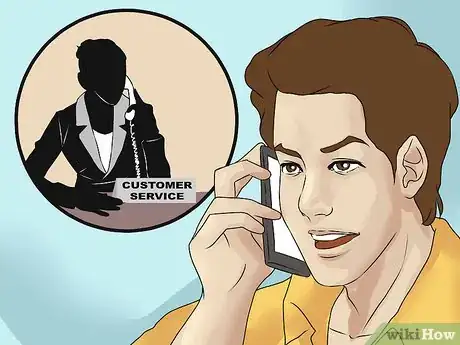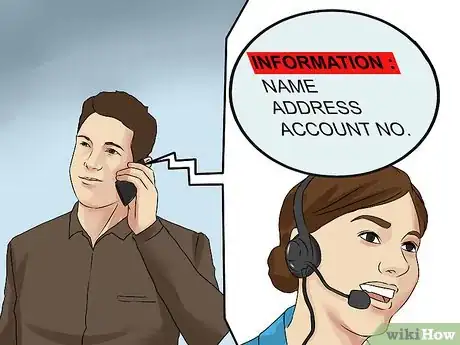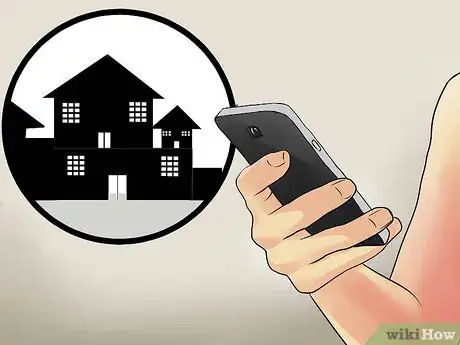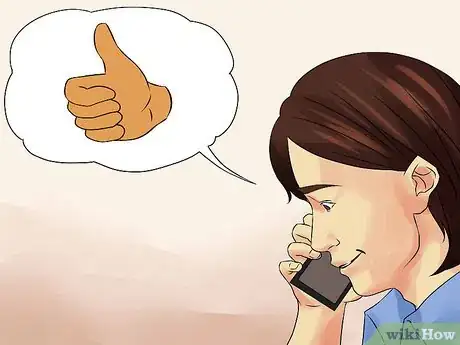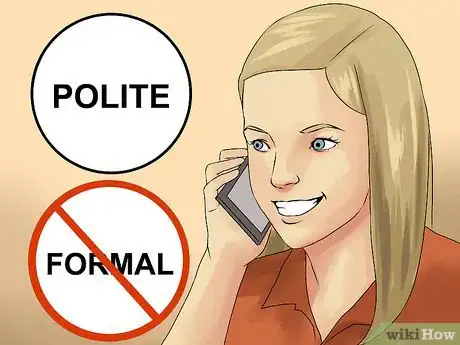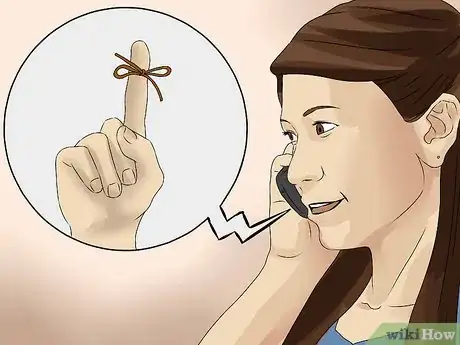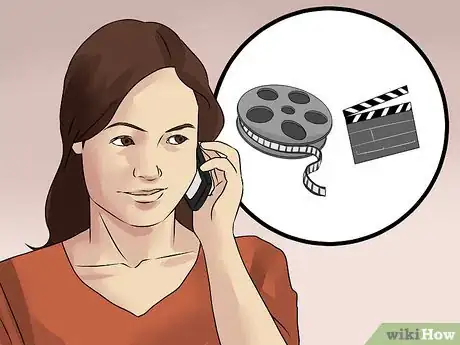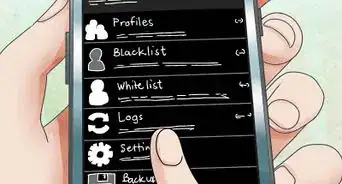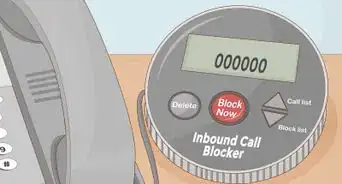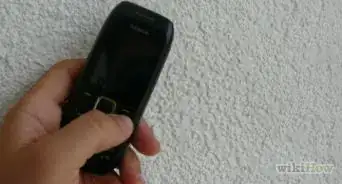This article was co-authored by wikiHow Staff. Our trained team of editors and researchers validate articles for accuracy and comprehensiveness. wikiHow's Content Management Team carefully monitors the work from our editorial staff to ensure that each article is backed by trusted research and meets our high quality standards.
This article has been viewed 58,327 times.
Learn more...
Calling a complete stranger or recent acquaintance on the phone can be handled a number of ways. In any of the situations you might face you are dealing with a lack of knowledge of the other person's identity and intentions. So the approach to any such phone call should be trying to get both of these questions answered first while keeping in mind you don't know how much information they have on you either.
Steps
Using Polite Phone Etiquette
-
1Introduce yourself and politely ask for the caller’s identity. You want to establish your identity and intentions to the unknown caller without giving too much information, but you also want to put them at ease. However, you also need to confirm who they are whether it’s a business contact or person you met informally at a party.
- If you met the person briefly try then you can introduce yourself by describing those circumstances. If you encounter a secretary or some other agent first then you might mention these circumstances so they can pass that along to the target person.
- For example, you can call and ask "I met Mr. Doe at yesterday's business luncheon and would like to speak with him again." Or if you get the person directly say, "Hello Ms. Jane, I met you at the lecture on the way out and would like to speak with you further."
- If you are calling someone you didn't meet then use what you can learn in context. For example, if you are calling someone at an electronics department store you might start by telling the receiving caller: "Hello, I am interested in your latest deals on blu-ray players."
- Or if you are calling a professional at their home, a professor from your university but not one you have a class with, you can try something such as: "Hello Dr. John, I attend the State University and would like to consult with you on a matter."
- Upon calling someone you met in an informal setting you should still use your first name, but perhaps without titles.
-
2Talk politely. You don't want to offend a stranger by being rude or wasting their time. So be courteous while in conversation and when scheduling calls and return calls.
- Call during the day--preferably around the middle of the afternoon or early evening.
- Try not to make a call during nighttime or dawn when you are likely to disturb a person's sleep and/or morning routine.
- Pay attention to any specified hours the caller may leave in automated messages or credentials.
Advertisement -
3Invoke memorable imagery in your conversation. You don't want this to be the last call to the person whether you know them only a little or not at all. But you also want however they remember you to be positive.[1]
- Use language that evokes the senses such as visual imagery or describes vivid events. However, you don't want to be crude.
- For example, you could be calling a new business contact to help recruit customers for your flower shop. You could start by asking, "Wouldn't you like your clientele to invest in the smell of roses, and see the color of lilacs?"
- You could be calling a person you met at a bar and want to describe how you met by reminding them of the “smell of alcohol” or “smoky atmosphere.”
-
4Ask for follow-up plans. Give the receiving caller something to look forward to. This is good to establish a longer lasting professional or personal contact if you don't know them very well or at all.[2]
- Set up a time to call your new contact perhaps even at regular intervals to keep the relationship going.
- Do this early, but once you have a conversation going when you can find a convenient break point.
- For example, you could be talking for a few minutes about your respective professional interests, and then say: "Oh by the way, I would like to set up a business call again next week." Proceed accordingly.
- For a personal call you could try waiting until you’ve established a rapport with the caller before asking them for further contact. See the later section on personal calls.
-
5Talk about personal interests. This involves listening at least as much as talking.[3]
- Ask light personal questions, but don't pry. For example, you can start with some simple domestic questions such as "How is your family" or "I see you like the local sports team." In a personal setting you can ask about common interests.
- Taking some interest in the contact personally without pushing to the point of making them feel like you are violating their privacy is a good way to run the first few calls.
Making Business Calls
-
1Call the person on their business or work line. Make sure you have prepared information on how you first met the person if it's someone you didn't know well. If it's someone new then think about what their formal position is.
- For example, you could be talking to a customer service agent for help with a recent purchase.
-
2Exchange credentials. Allow the receiver to identify themselves as official representatives of the company. They may ask you for identifying information including name, address, account numbers, and so on.
- Be wary about exchanging your social security number. Most companies only ask for the last four digits, or offer alternative means to identify you. If neither is the case, and you have confirmed the identity of the receiver, you can consider risking giving this information out. But you should strongly think about finding more secure means to do this.
- You may exchange pleasantries and small talk to let the conversation become more comfortable. The agent could say something like, “I hope you are having a good morning. It’s nice weather we’re having?”
-
3Tell your contact your intentions and needs accurately. You want to make it clear to your contact what you need from them in an efficient manner.
- If you have a lot of details then ask them to have a way of recording them ready as a courtesy. This can be as simple as asking them if they have “pen and paper” ready.
- If you have a more elaborate proposal then this is a good time to make further plans for contact. Introduce the plan and offer the receiver an opportunity to get to know you and your proposal better. You could say something such as: “I have a plan for a new shopping mall let’s discuss the details over lunch.” Or if they don’t want to meet in person just yet you can say: “How about we schedule a conference call later in the week?”
-
4Talk about personal links to your business contact. This can help relationships between companies. If you call a new contact and the both of you establish at least a small personal interest then conversations can proceed more smoothly.
- Ask them about their location’s interests such as sports teams or attractions. For example you might call a contact you don’t know very well in Kansas City and ask: “How are the Royals this year?”
- You can ask about the new contact’s personal life, but don’t press this too far and violate their privacy. For example you can ask “How are your kids these days?” They might tell you their status, but don’t belabor the issue.
-
5Terminate the call with reminders and politely. Don’t end the call abruptly or without a proper parting word.
- Remind the new contact of what you discussed briefly and of any upcoming plans.
- Thank them for their time and give a sign off such as “Goodbye” or “Talk to you again soon” before hanging up.
Talking about Personal Matters
-
1Call the person at their residence. This is a more intimate form of communication than the previous method.[4]
- After introducing yourself you will want to try some of the memory techniques from the earlier steps if it's someone you know a little.
- If you are calling someone you don't know very well then you might try some catching up. Ask, "It's been a while, do you remember meeting me at graduation?" or you can substitute some other relevant event.
- If you are dealing with someone you don't know at all then think more about why you’re calling them and what you know about their identity. If you know something about their activities or work then those can be clues as to how to start a phone call conversation.
- For example, you could call someone you don't know that you found out played high school football in games you had watched. You can start the call by introducing yourself and saying: "I remember you from the high school playoff game...." then go on with your conversation.
- If there is no connection you can establish then the burden is on you, as the caller, to introduce yourself and your intentions. State your name and what you are calling about quickly to reduce any sense of anxiety the other caller may have. Perhaps say, "I'm John Doe and I need to ask you a favor regarding the noise level in your house...." or whatever the reason may be.
-
2Talk about common interests. This will help ease communication and reduce any antagonism whether the recipient of your call is someone you know a little or not at all.
- For someone you don't know very well you should steer the conversation to common interests in popular culture, literature, food, and so forth. This will extend the conversation and make it more positive. For example, you could ask: "Do you like sushi?" or other cuisine. If they agree, this can even be the means to an in-person meeting.
- For someone you don't know at all, you can attempt this common interest approach as well. Perhaps after you've made your intentions clear you can then make the conversation friendlier by asking "So, do you enjoy science fiction movies?" Depending on the degree of your involvement with the other person this may even lead to an in-person meeting. But don't press.
-
3Use phone etiquette. Even though this is a casual conversation it doesn't hurt to be polite.
- You don't need to use formal titles and positions when addressing the recipient in this scenario, but you don't want to use crude nicknames or shorthand. Use their full names unless they suggest otherwise.
- Make calls at the same reasonable times you would for a business--late morning or early afternoon. Unless told otherwise.
-
4Invoke imagery to liven up the call. Allow this call to be a memorable one through vivid description.[5]
- Take advantage of visual, auditory, and other sensory descriptors. But don't be crude.
- For example, you could be calling someone you don't know very well and recalling for them: "Remember when you ran into me by those wonderful smelling flowers?"
- Although, even a foul smelling memory might help with the call if you can play it off as humorous and say it something like this: "Remember me? The guy you fell into the puddle of mud with?"
-
5Ask for further contact. You don't need to set a hard schedule to meet as you would with a professional contact. But think of ways to keep in touch.
- Use the common interests you established earlier to discuss activities you might do together or at least have regular conversations about.
- For example, you can have phone conversations about the latest comic books, or exchange recipes.
- Be diligent about giving each other new and updated phone numbers if and when they are changed.
Community Q&A
-
QuestionWhich is the safest telephone number to give to a new acquaintance, my home phone or cell phone number?
 Canada_WikieditsCommunity AnswerCell phone would be better. The information they could get with a cell phone number is limited, whereas with a home phone number it is not.
Canada_WikieditsCommunity AnswerCell phone would be better. The information they could get with a cell phone number is limited, whereas with a home phone number it is not.
Warnings
- If you can't confirm the recipient's identity then you should avoid a detailed conversation until you can.⧼thumbs_response⧽
- Don't push your contact for personal information to the point of violating their privacy.⧼thumbs_response⧽
- Don't give out personal information from you or the recipient without permission.⧼thumbs_response⧽
References
- ↑ http://usatoday30.usatoday.com/tech/columnist/aprilholladay/2007-03-12-memory-first_N.htm
- ↑ http://www.inc.com/guides/201101/how-to-build-better-business-relationships.html
- ↑ http://www.inc.com/guides/201101/how-to-build-better-business-relationships.html
- ↑ http://www.huffingtonpost.com/delia-lloyd/friendship-etiquette_b_864561.html
- ↑ http://usatoday30.usatoday.com/tech/columnist/aprilholladay/2007-03-12-memory-first_N.htm
